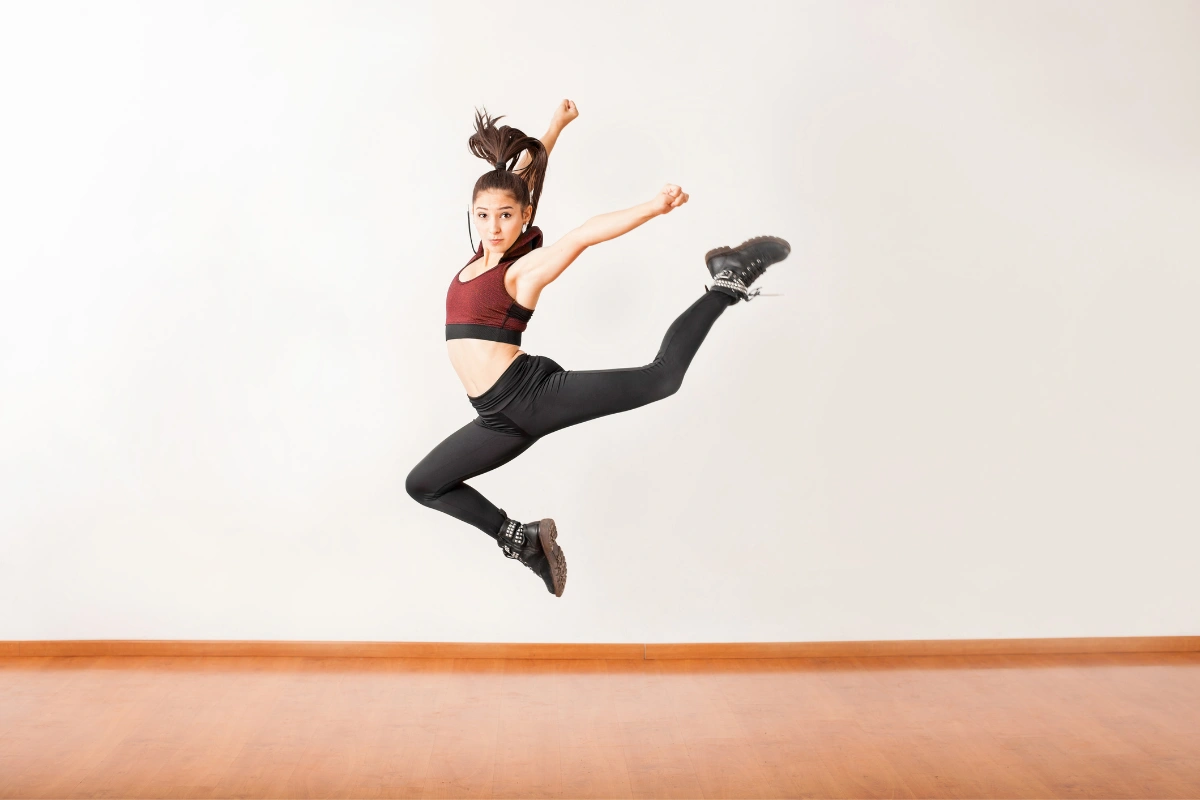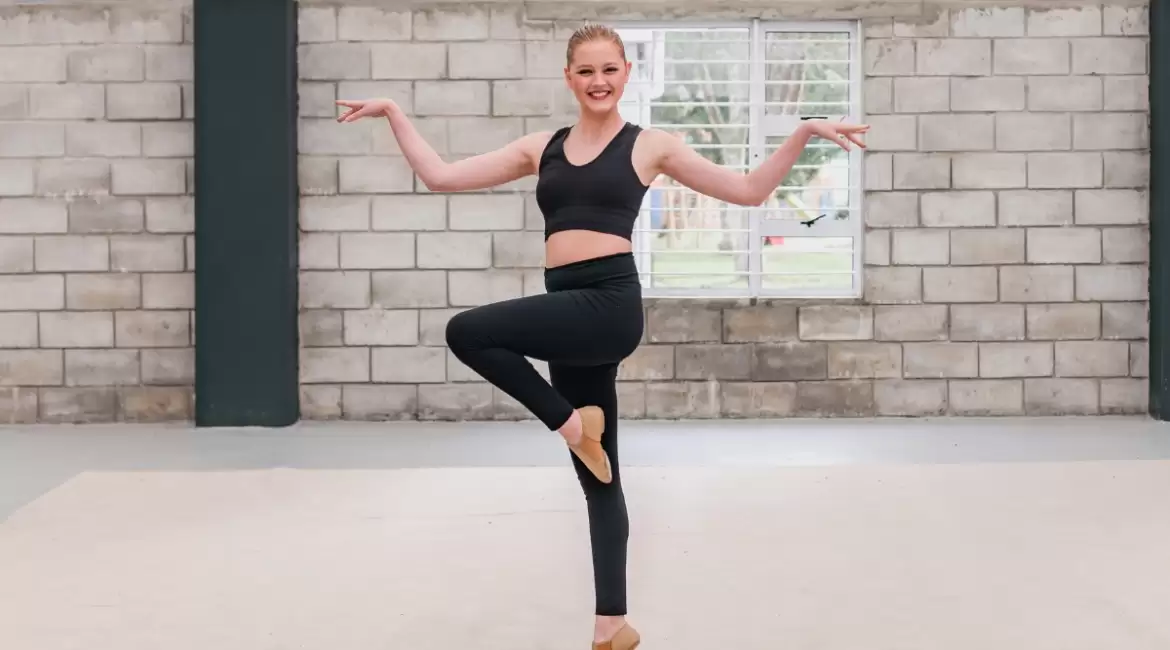Jazz dance, a vibrant and expressive style, is known for its high energy, dynamic movements, and unique blend of rhythm and improvisation. One of the most essential and foundational moves in this dance genre is the Jazz Square, also referred to as the Jazz Box. While the name might sound simple, this four-step movement is integral to numerous routines in various dance styles, ranging from jazz and musical theater to disco, hip-hop, and contemporary dance. Learning the Jazz Square not only enhances a dancer’s coordination and musicality but also opens the door to more advanced choreography and creative expression.
In this comprehensive guide, we’ll explore the history of the Jazz Square, break down the steps, and provide tips and variations for mastering this iconic dance move.
The Origins of the Jazz Square
The Jazz Square, though a seemingly basic dance step, carries with it a rich history rooted in the development of jazz dance itself. Jazz dance originated in the African American communities in the late 19th and early 20th centuries, emerging as a blend of African rhythms and European dance forms. It evolved alongside jazz music, which was also taking shape during this period, and became a powerful means of self-expression and cultural exchange.
Jazz dance’s early roots can be traced back to African vernacular dance forms, which included movements like kicks, leaps, and improvisational footwork. As African Americans migrated to cities like New Orleans, Chicago, and New York, these dances blended with European traditions, creating a new hybrid style. By the 1920s, jazz music and dance had become a central part of the cultural landscape in the United States, influencing everything from Broadway productions to Hollywood films.
The Jazz Square, with its simple yet effective footwork pattern, became a staple of this evolving dance form. It represents one of the many ways in which jazz dance incorporates rhythm, style, and improvisation. The step, like many others in jazz, allows dancers to maintain a relaxed upper body while focusing on footwork and musicality.
Jazz Dance and Its Evolution into Modern Dance Styles
The development of jazz dance was greatly influenced by pioneers like Bob Fosse, Gus Giordano, and Fred Astaire, who helped popularize the style on Broadway and in films. Each of these choreographers brought their own unique interpretation to jazz dance, with Fosse’s work often incorporating sharp, isolated movements and Giordano emphasizing fluidity and precision. Astaire, on the other hand, merged jazz with ballroom and tap, creating a smooth and sophisticated style that has become synonymous with classic Hollywood musicals.
In this dynamic environment, the Jazz Square became a core movement used across many styles, from jazz to line dancing, hip-hop, disco, and even ballroom. Its adaptability and ease of execution have made it a go-to step in countless routines. While the footwork pattern remains consistent—stepping in the shape of a square or box—the Jazz Square can be transformed by altering the tempo, style, and overall attitude of the movement.

Why the Jazz Square Is a Foundational Step in Dance
The Jazz Square’s four-step pattern may seem straightforward, but it serves as a critical building block for dancers of all levels. Here are a few reasons why the Jazz Square is considered a foundational step in jazz and other dance forms:
- Improves Coordination: The step requires coordination between the feet and the body, helping dancers develop a strong sense of spatial awareness.
- Develops Musicality: As the Jazz Square is performed to music, it enhances a dancer’s ability to stay on beat and respond to different tempos and rhythms.
- Versatility: The Jazz Square can be easily integrated into various dance styles, from jazz and hip-hop to contemporary and ballroom.
- Adaptability: Dancers can add personal flair to the movement, making it an excellent tool for improvisation and self-expression.
Now, let’s break down how to perform the Jazz Square step-by-step.
How to Do the Jazz Square: Step-by-Step Instructions
Whether you’re a beginner or an experienced dancer, learning the Jazz Square is a fun and rewarding experience. The step is easy to learn, and once you’ve mastered the basic version, you can start incorporating it into more complex routines. Here’s how to do it:
Starting Position
Begin by standing with your feet together and your arms relaxed by your sides. This neutral position helps you stay grounded and prepares you to move in any direction. Make sure your knees are slightly bent to allow for flexibility and ease of movement.
Cross the Right Foot Over the Left
The first step of the Jazz Square involves crossing your right foot over your left foot. As you step, imagine drawing the first line of a square on the floor with your feet. The cross-step is what gives the Jazz Square its signature style, adding a sense of movement and rhythm to the dance.
Keep your upper body relaxed and centered as you step, allowing your legs to take the lead in this movement. The smoother the transition between steps, the more fluid the Jazz Square will appear.
Step Back with the Left Foot
Next, step back with your left foot. This move brings your body back into alignment and sets up the second part of the square. As you step back, try to maintain balance and control, avoiding any sudden shifts in your weight. This part of the movement helps establish the structure of the square, so be mindful of your foot placement.
Step to the Side with the Right Foot
Now, step to the side with your right foot. This step completes the third side of the square and brings your body into a more neutral position. As you step, focus on making the movement smooth and seamless, as if you’re gliding across the floor. The key to a polished Jazz Square is fluid transitions between each step.
Step Forward with the Left Foot
Finally, step forward with your left foot to complete the square. By stepping forward, you return to the starting position, ready to repeat the movement. At this point, your right foot should be prepared to cross over the left again, allowing you to continue the Jazz Square pattern.
Once you’ve mastered the basic steps, you can start to speed up the movement, add embellishments, or incorporate the Jazz Square into larger dance sequences.
Tips for Perfecting the Jazz Square
While the Jazz Square is a relatively simple step, there are a few key techniques that can help you perfect it and make it your own. Here are some tips to keep in mind as you practice:
- Pay Attention to Your Posture: Good posture is essential for any dance movement, and the Jazz Square is no exception. Keep your spine aligned and your shoulders relaxed to ensure a fluid and graceful execution.
- Stay on the Beat: Jazz dance is all about rhythm, so make sure you’re stepping in time with the music. Practice the Jazz Square with different types of music to challenge yourself and improve your timing.
- Use Your Arms: While the Jazz Square primarily focuses on footwork, your arms can add an extra layer of style and expression. Try adding subtle arm movements, such as swinging them with the rhythm or holding them in a graceful position.
- Experiment with Tempo: Once you’re comfortable with the basic Jazz Square, experiment with changing the speed of your steps. You can slow the movement down for a more dramatic effect or speed it up for a high-energy performance.
- Practice, Practice, Practice: Like any dance move, the Jazz Square requires practice to master. Start slowly, focusing on each step, and gradually increase your speed as you become more comfortable with the movement.

Advanced Jazz Square Variations
Once you’ve got the basic Jazz Square down, you can begin to explore more advanced variations that add flair and complexity to the step. Here are a few ideas to take your Jazz Square to the next level:
Turning Jazz Square
One of the most popular variations is the turning Jazz Square. To perform this variation, simply add a pivot or slight turn to each step. As you cross your foot over, start to rotate your body slightly, completing a full turn by the end of the square. This adds an extra layer of difficulty and makes the movement more visually dynamic.
Syncopated Jazz Square
For a more rhythmically challenging version, try a syncopated Jazz Square. In this variation, you’ll speed up certain steps to create an offbeat, syncopated rhythm. This can be particularly effective when dancing to jazz or swing music, which often incorporates syncopation.
Jazz Square with Arm Movements
Another way to elevate the Jazz Square is by incorporating arm movements. Try adding sweeping or sharp arm gestures as you step to create a more stylized and expressive version of the movement. For example, you can raise your arms in a graceful arc as you cross your foot or snap your fingers to emphasize the rhythm.
Double-Time Jazz Square
To challenge your speed and agility, practice doing the Jazz Square in double-time. This involves performing the steps twice as fast, requiring quick footwork and sharp transitions. Double-time Jazz Squares are often used in fast-paced dance routines, especially in hip-hop or Latin dance styles.
Jazz Square in Popular Culture and Dance Performances
The Jazz Square has transcended the boundaries of traditional jazz dance and has become a familiar step in a wide range of dance styles and popular culture. It’s frequently used in musical theater, particularly in classic Broadway shows like Chicago and Cabaret. The step is also commonly found in film dance sequences, where it’s often used to add a touch of jazz or swing to group performances.
Moreover, the Jazz Square has found its way into popular dance challenges on social media platforms like TikTok. Its simple, repetitive pattern makes it a perfect candidate for short, catchy routines that anyone can learn. This has brought renewed attention to the Jazz Square, making it a popular choice for dancers of all ages and skill levels.
Why Every Dancer Should Learn the Jazz Square
The Jazz Square is more than just a basic dance step—it’s a gateway to understanding the fundamentals of jazz dance and movement. By mastering this step, dancers gain a deeper appreciation for rhythm, coordination, and musicality. It’s a versatile move that can be adapted to suit any style, from traditional jazz to contemporary dance forms.
Additionally, the Jazz Square encourages creativity and personal expression. Once you’ve learned the basic pattern, you can start experimenting with different styles, tempos, and variations, making the step your own. Whether you’re a beginner looking to improve your dance skills or an experienced dancer seeking new challenges, the Jazz Square is an essential part of any dancer’s repertoire.
Conclusion
The Jazz Square is a timeless and essential step that has stood the test of time in the world of dance. Its simplicity, versatility, and adaptability make it a foundational movement for dancers of all levels. By learning the Jazz Square, you not only gain a valuable skill but also connect with the rich history and vibrant energy of jazz dance.
As you continue to practice and explore the Jazz Square, remember that dance is about more than just technique—it’s about expressing yourself and having fun. So put on some music, hit the dance floor, and enjoy the journey of mastering this classic dance move.


Leave a reply